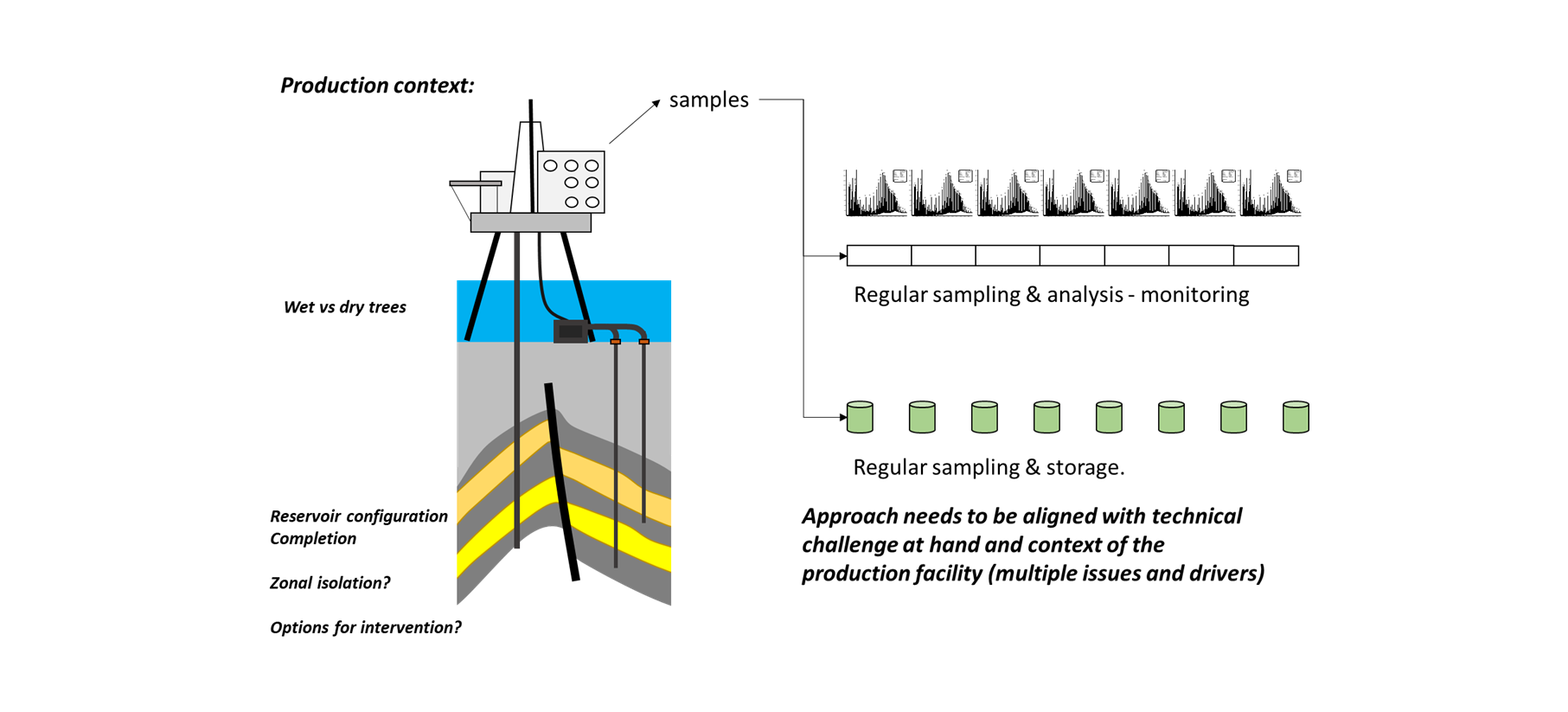APT Allomon - Production Allocation & Monitoring Service
Production Allocation & Monitoring
APT has built a workflow and toolkit 'APT Allomon' - which enables accurate, effective production allocation & monitoring in both conventional and unconventional settings.

Production Allocation
The determination of the amount, or portion, of a commingled fluid to be assigned to two or more individual fluid sources (e.g. stratigraphic zones, pipelines, fields, wells, etc) at a particular moment in time, based on the fluid chemistry. Deployable in both conventional and unconventional settings. This approach utilizes a number of 'proprietary' toolkits all built around the Allomon unmixer which is unrivaled in capability. It is a data driven tool and therefore can be utilized for unmixing of oils, waters and gases.
Production Monitoring
This involves analysis of a time series of production fluids from the same source (e.g. a well, pipeline, field, reservoir, etc) and interpretation of the resulting data in order to look for changes in fluid chemistry as a result of subsurface changes and/or production-related processes through time.
Why is it important?
The optimum recovery of petroleum resources requires an understanding of the recovery mechanisms and how their effectiveness varies with respect to the geology of the reservoir system.
Production logging tools comprise a range of techniques designed to monitor the flow rate and saturations along a well bore during field production.
Traditional production logging techniques aim to resolve a number of problems:
- Diagnose production problems and allocate production
- Select zones for recompletion
Advantages
- Geochemically-based production methods do not require intervention: there is no risk to the well and none of the risk entailed in additional operational activity.
- They are incredibly cheap – orders of magnitude less than a conventional PLT logging program. There is no additional rig time, and no extra personnel required at the well site.
- Applicable to a wide range of fields irrespective of pressure, temperature, reservoir quality, reservoir fluid type etc.
- Data are from the actual production fluids themselves, not a surrogate such as a tracer or microseismic.
Requirements
- Good quality fluid samples – some drilling fluid contamination can be tolerated.
- “End members” (usually) for production allocation (not for monitoring). Maximum end member limit is 8.
Workflow summary
Production allocation objective: Determine the proportions of end-members that constitute a commingled production sample.
Fundamental basis of method: Some property (peak concentration, ratio etc.) of a mixture is expressed in terms of the end-members, one equation for each property, resulting in a (possibly large) set of linear equations.
Analytical methods selected:
- Different data types used (and combined if appropriate).
Data selection and pre-processing
- Optimise data pre-processing, flexible approach, potential benefits of different methods in differing circumstances.
End-member contributions to the mixture determined
- Solve equations (typically many more equations than end-members, so a least-squares "best-fit").
Estimate uncertainty, "plus-minus", confidence intervals etc.
- Monte Carlo simulation (requires replicate analyses to estimate data variance).
- Bootstrap simulation (replicates desirable but not essential).
Reporting
Reporting is flexible and individually designed for each client.
Fully digital in any format designated by the client (pdf, Word, Excel, PowerPoint, etc.).
Regular reporting schedule throughout project life span.
References
Barrie, C.D., Donohue, C., Carvajal, H., Wright, S., Yu, A., Burke, C., Woodruff, O. and Michael, E. 2024. Introduction to special section: The role of geochemical workflows in understanding resource plays: Interpretation 11. https://doi.org/10.1190/INT-2023-0830-SPSEINTRO.1
Barrie, C.D. and Michael, E. 2023. Production Allocation and Fluid Fingerprinting in Conventional Reservoirs. AAPG Datapages/Archives: Production Allocation and Fluid Fingerprinting in Conventional Reservoirs
Barrie, C.D. and Patience, R. 2022. Am I producing from where I landed? The importance and challenges of drainage definition via subsurface fluid chemistry: Unconventional Resources Technology Conference, 20–22 June 2022. https://doi.org/10.15530/urtec-2022-3720528
Barrie, C.D. and Michael, E. 2022. Reservoir Management: Evaluating Fluid Drainage Dynamics in Resource Plays. AAPG Datapages/Archives: Reservoir Management: Evaluating Fluid Drainage Dynamics in Resource Plays
Patience, R., Bastow, M., Fowler, M., Moore, J. and Barrie, C.D. 2021. The Application of Petroleum Geochemical Methods to Production Allocation of Commingled Fluids: Paper presented at the SPE Europec featured at 82nd EAGE Conference and Exhibition, Amsterdam, The Netherlands, October 2021. https://doi.org/10.2118/205130-MS